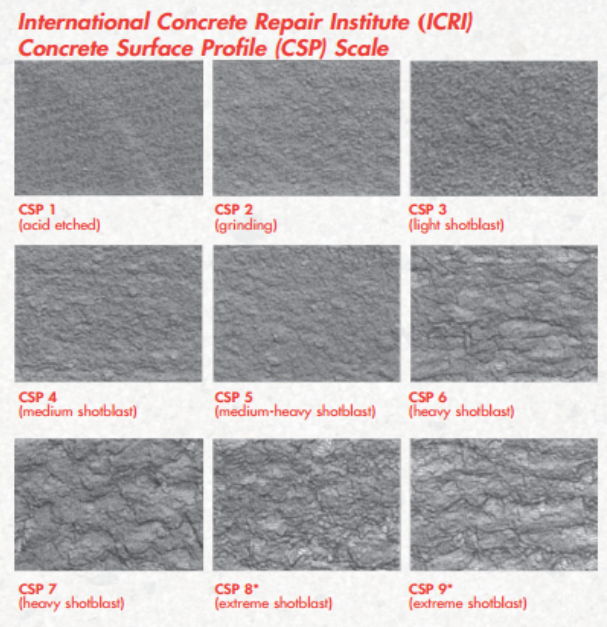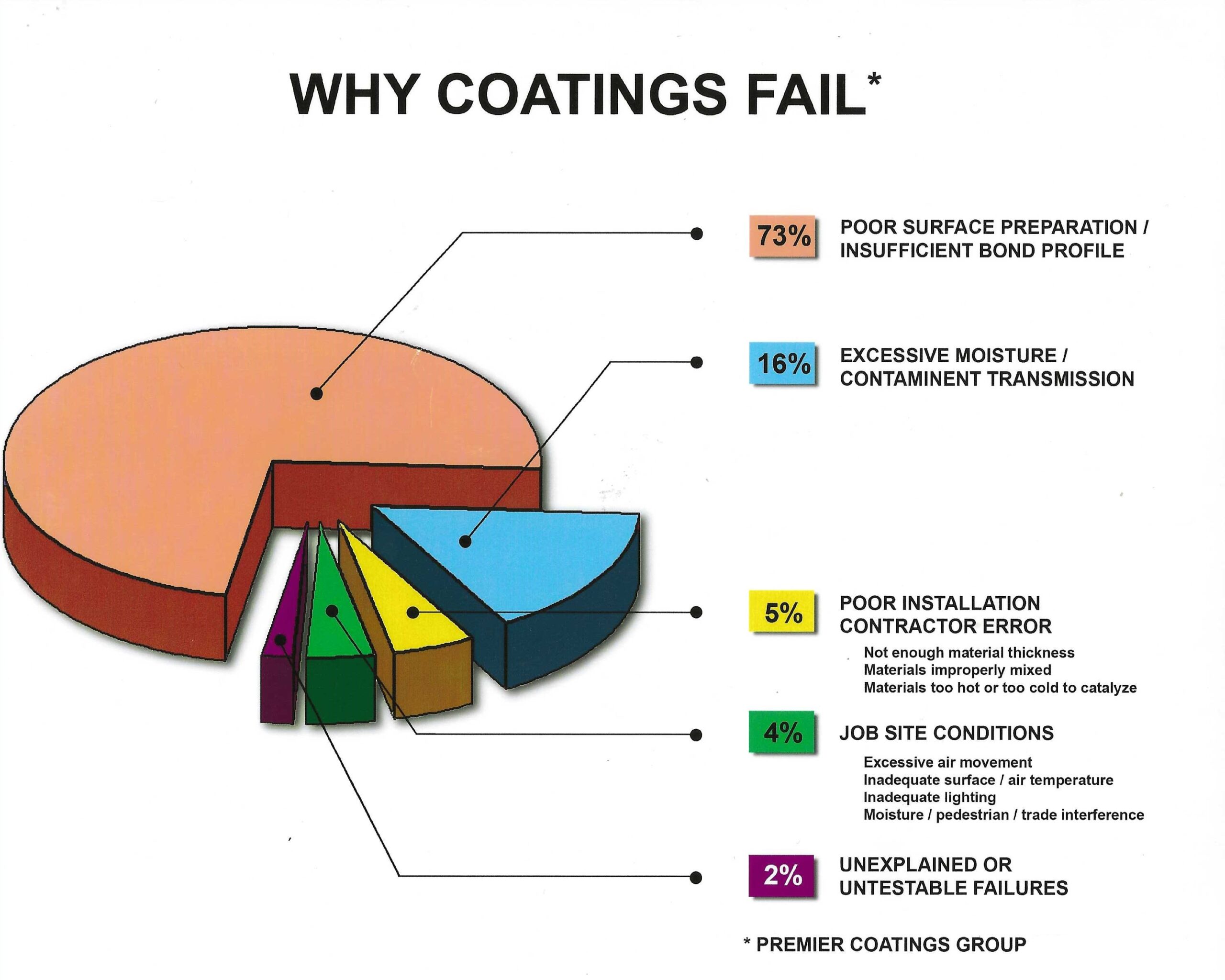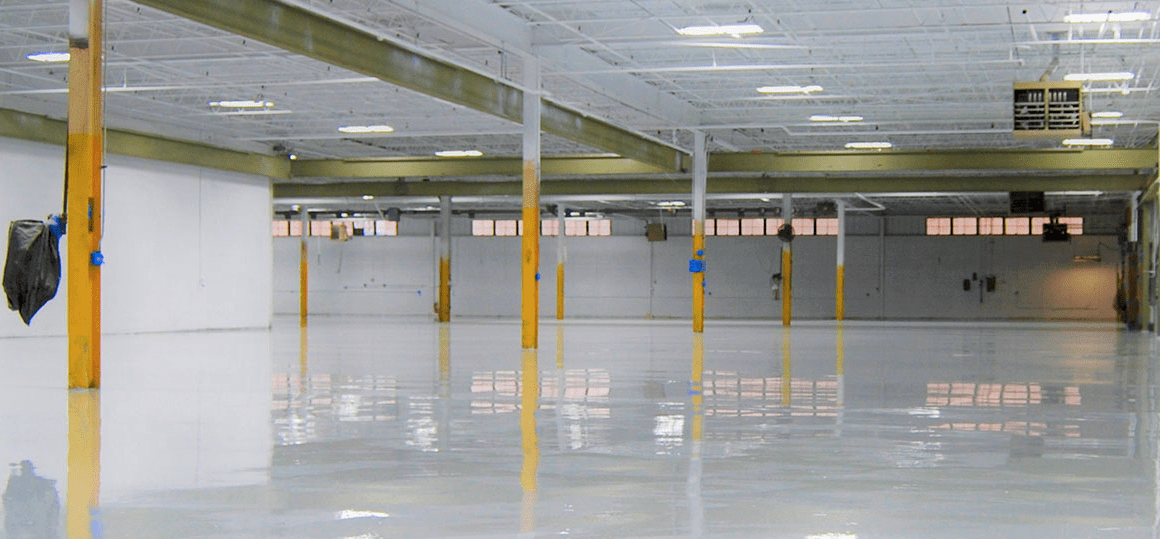How to Prep Concrete Surfaces for Epoxy Coatings
Several years ago, the International Concrete Repair Institute (I.C.R.I.) released Technical Guideline No. 310.2R-2013 “Selecting and Specifying Concrete Surface Preparation for Sealers, Coatings, Polymer Overlays, and Concrete Repair”. This guideline provided ten surface profiles that were considered to be acceptable for various types of systems to be applied to the concrete. The purpose of this guideline was to provide an industry standard to reduce the large number of coating failures due to insufficient concrete profiles. Surface Prep Profiles as Defined by ICRI No 310.2R-2013  The use of mechanical profiling of concrete that has had curing compounds applied to it is considered the most effective way to remove the curing agents while creating a bond profile for the coatings to adhere to.
The use of mechanical profiling of concrete that has had curing compounds applied to it is considered the most effective way to remove the curing agents while creating a bond profile for the coatings to adhere to.
Diamond Grinding
This method uses various grit diamonds to grind the curing compound off. Again, various bond profiles can be achieved with this method.
Shot-Blasting
This method utilizes small metal beads that are “shot” at the concrete and then reclaimed through a high-powered vacuum system. By utilizing different size beads, different profiles can be achieved. Other methods of surface preparation such as acid-etching, light sanding, and power-washing are no longer considered acceptable. These methods do not remove the curing agents applied to concrete in most cases. To conduct a basic field test to see if your concrete substrate is ready for a coating to be applied, place a few droplets of water on the surface. If after a few minutes the water remains on the surface, adequate removal of the curing compounds has NOT been achieved. However, if the water is absorbed into the concrete, the surface tension created by curing agents has been removed. WHY EPOXY COATINGS FAIL  For any questions concerning Surface Prep, contact Thermal-Chem at 1-800-635-3773.
For any questions concerning Surface Prep, contact Thermal-Chem at 1-800-635-3773.

